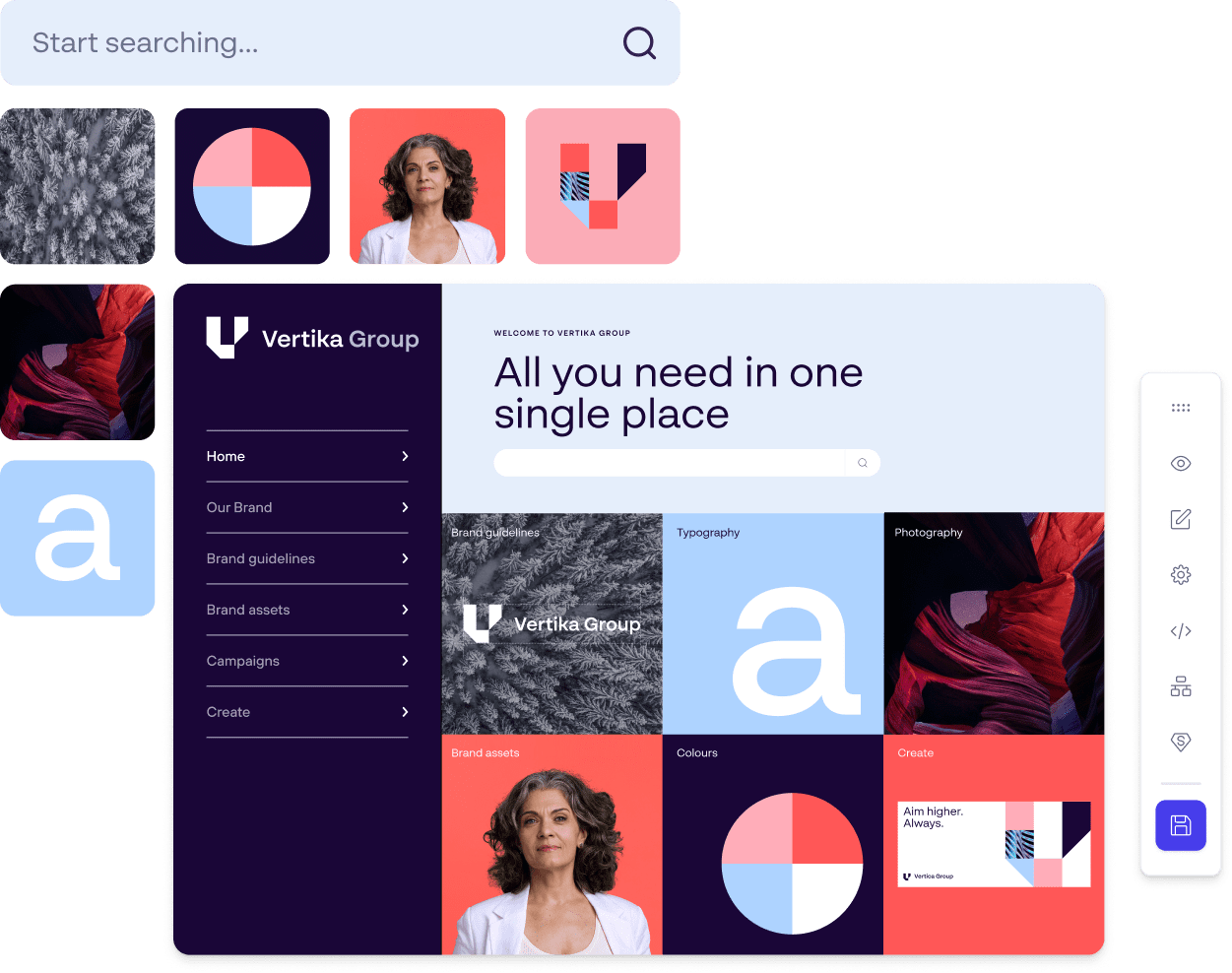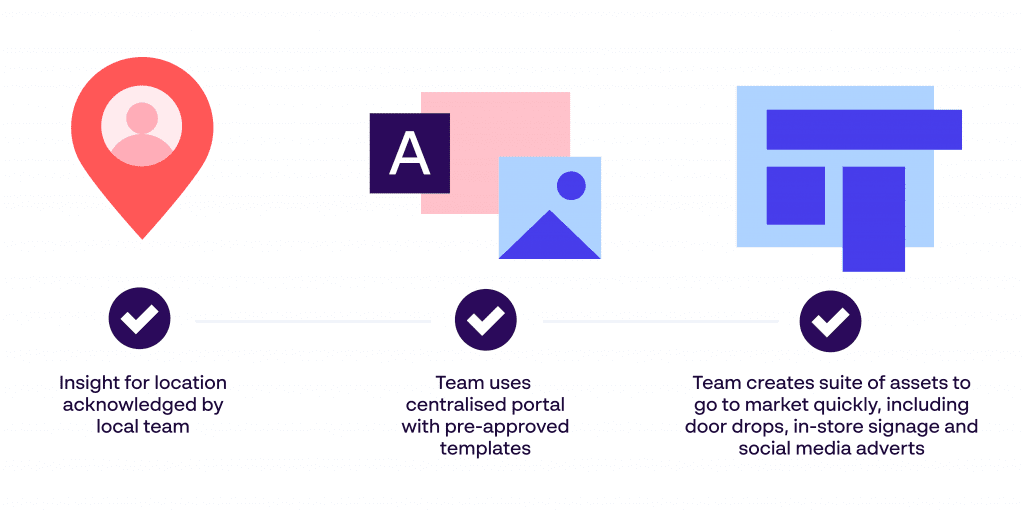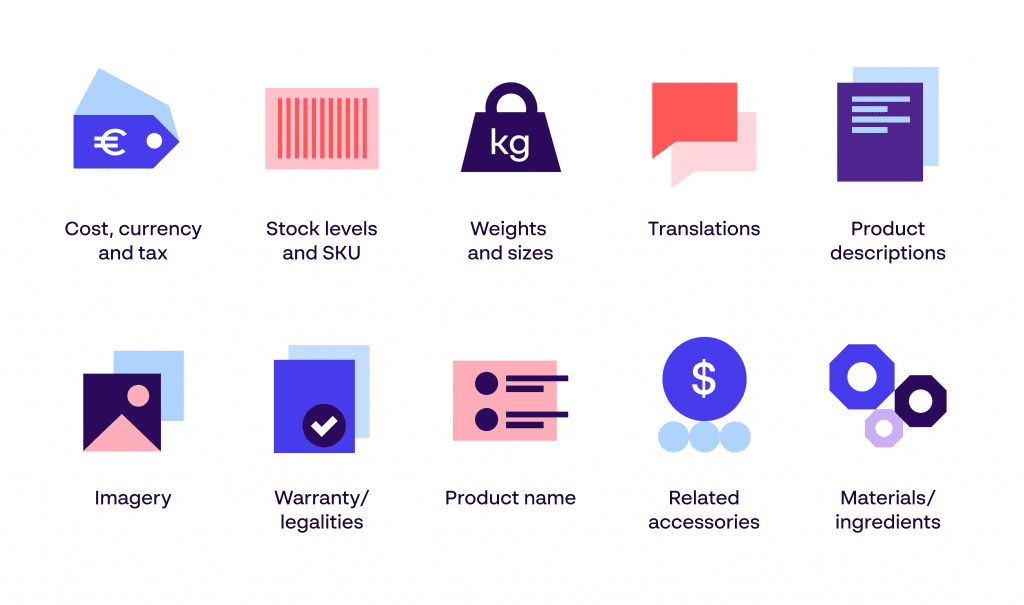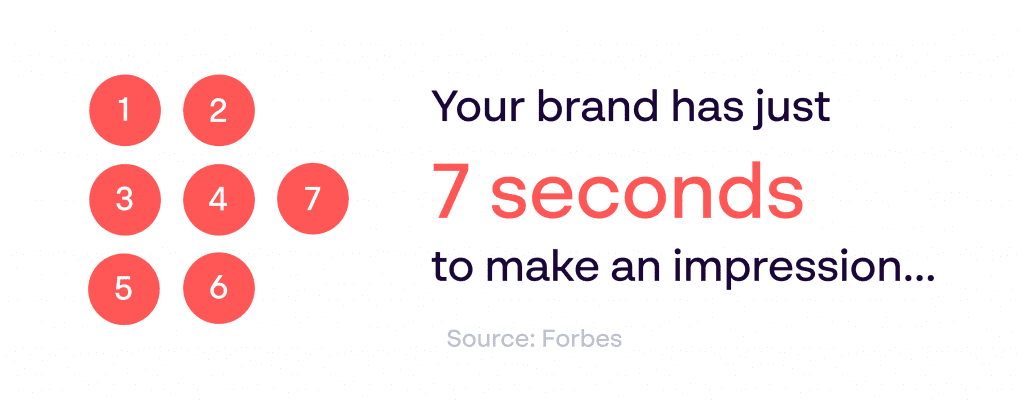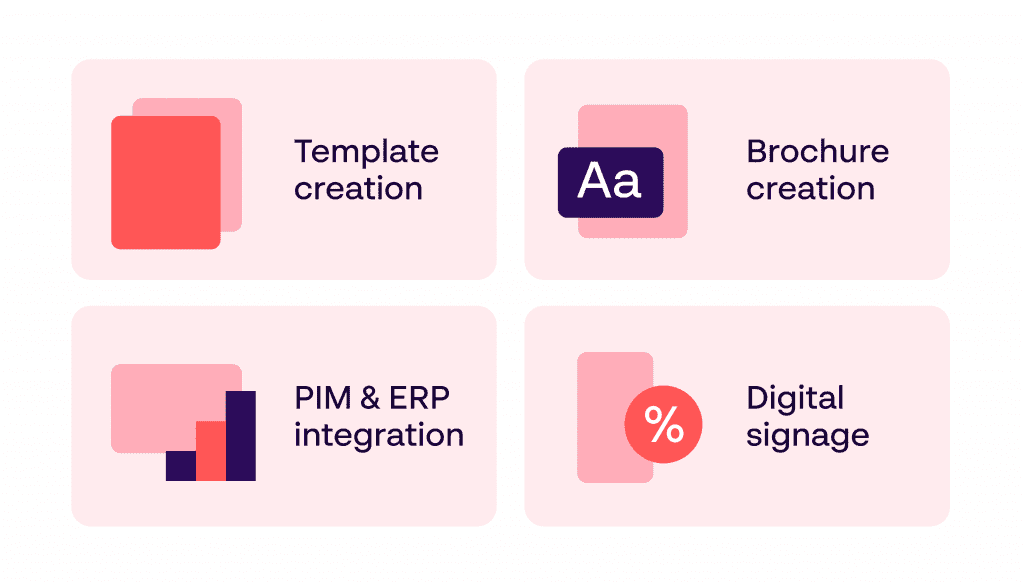Brand managers have a big responsibility: to make sure the brand is aligned across every asset, every campaign, and every channel, all over the world. And without the right approval process in place, it’s easy for the content creation workflow to spiral into confusion, delays, inconsistencies.
It doesn’t have to be that way.
With the right structure and tools, approvals can run smoothly – and even help your team deliver better and faster.
Here’s how to simplify sign-off and keep every asset perfectly on-brand.
Five steps to streamline your sign‑off process
There are many ways to approach your marketing content approval workflow. The right approach will depend on the size and nature of your brand. That said, there are some key principles that always apply. The aim here is not to micromanage the content creation process for teams – this is about ensuring clarity, consistency and control over all your brand campaigns.
Step 1: Map your approval process
Before you can streamline, you need clarity. Start by identifying all the people and processes involved in getting assets signed off. Your audit needs to include:
- What type of content and campaign material is being created
- The stages involved in the creation of each type
- Who is accountable at each stage
- Timelines for each stage
- Triggers for moving from each stage to the next
- How progress is communicated
- How campaigns are adapted for different markets
- Any alternative processes that exist for urgent or topical content
Does everyone know their role in this process? The advantage of using software like Papirfly is that the marketing content approval workflow is automated and visible to everyone, removing any confusion over who does what.
Step 2: Document everything
Ideally, you’re fully digital by now. If not, you may still be using physical forms, emails, a PDF annotator or project management tool to submit requests. Either way, it’s worth creating a standard template to keep everything consistent. This may be in the form of a checklist, comment boxes, or signature sections. Don’t just automatically go with what you’ve already got. You need to make sure you have documentation that addresses the following:
- How to submit change requests
- What happens after approval or refusal
- Who is accountable if something goes wrong
- What happens if the approval is unavailable
- How many revisions are allowed before escalation
- How are general review phases separated from approvals
A clear, shared approval guide is invaluable here. It helps new starters and existing employees get to grips with how things work – and gives you peace of mind that brand quality will be protected, even when you’re not there.
Step 3: Share brand guidelines
Without comprehensive brand guidelines, your approvals process could end up being unnecessarily long and complicated. Or worse, campaigns could go to market completely wrong. At the very minimum, brand guidelines should include:
- Logo use across different markets and applications
- Typeface and text sizing
- Supporting visual assets and icons
- Imagery guidance
- Tone of voice rules
Step 4: Make feedback meaningful
Marketing content approval workflows work best when feedback is:
- Specific – you point to the exact issue and solution
- Actionable – you explain what happens next, and who takes ownership
- Aligned – you use brand guidelines to prevent subjective or inconsistent changes
Does everyone in your organization know this? To boost understanding, include examples of constructive feedback in your approval guide or as a separate piece of training. For example:
❌ Not specific
“The information looks too much.”
✅ Specific
“Volume of information makes it hard to read. Remove section B. (marked up).”
❌ Not actionable
“I’m happy with this now. Send it across to David and see what he thinks.”
✅ Actionable
“I’m happy with this now. You will need David’s final approval before posting. Please make sure he does this today and confirm with me when it’s done.”
❌ Not aligned
“That logo doesn’t seem quite right.”
✅ Aligned
“The exclusion zone around the logo is too small. Refer to brand guidelines for correct measurements.”
Step 5: Keep refining processes and fix recurring issues
Even the best processes hit bumps. Debrief after major projects to identify bottlenecks and fixes. Map imperfect journeys and rebuild your process if it’s not delivering. It’s also important to ensure all templates evolve with your brand.
If the same problems keep appearing in approvals, your brief might be the culprit. By refining briefs, you reduce amends – which means quicker sign-off and fewer bottlenecks. Check:
- Are briefs detailed enough?
- Do different roles need tailored briefing formats?
- Does everyone have easy access to brand guidelines and assets?
How Papirfly transforms your marketing content approval workflow
With Papirfly’s Digital Asset Management and Templated Content Creation suite, your approvals are fully digitized, tracked, and optimized.
Key features to support your marketing content approval workflow include:
- Chat function — all stakeholders discuss feedback in one place, avoiding conflicting instructions
- Document markup — pinpoint exactly where changes are needed
- Locked templates — empower employees to create their own materials with core brand elements locked in, reducing the number of review steps required
- Automated workflows — from submission to sign-off, every stage is visible, accountable, and recorded
- Re-approval safeguards — any post-sign-off change reopens the approval process, ensuring final assets are always correct
The result? Faster approvals, stronger consistency, and full confidence in every asset you release – from one central portal.
Bring your approval workflow under control
With Papirfly, you can protect your brand, empower your teams, and get campaigns to market without the chaos. Book your demo today.
Does everyone create content that’s on‑brand, every time?
Find peace of mind with
better brand governance.
Does everyone create content that’s on‑brand, every time?
Find peace of mind with
better brand governance.
Find peace of mind with
better brand governance.
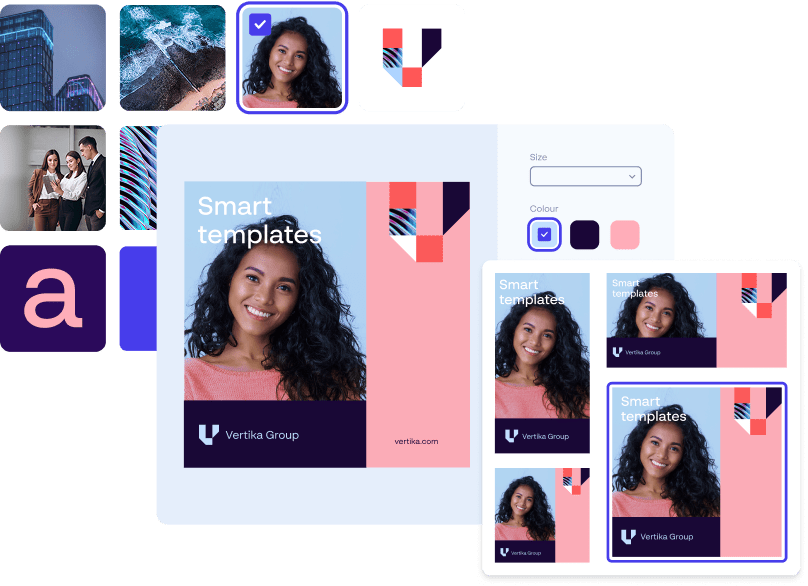
FAQs
Standardized documentation like templates, checklists, and approval guides ensures everyone follows the same process. It also reduces the risk of missed steps, miscommunication, or repeated revisions.
Comprehensive guidelines help creators get assets right the first time. This reduces unnecessary back-and-forth and ensures campaigns go to market on-brand and on time.
Feedback should be specific, actionable, and aligned to brand guidelines. This prevents subjective changes and ensures clear next steps for the person making updates.
Papirfly digitizes and automates approvals, centralizes feedback, and uses locked templates to protect brand elements. This ensures every asset meets brand standards before it is published.


